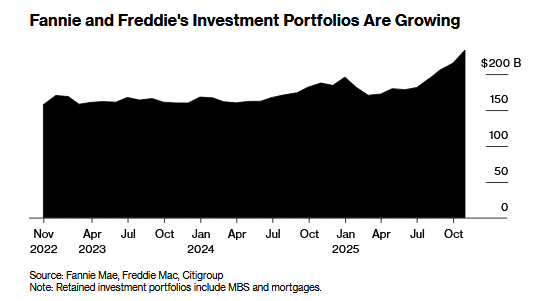Over the past month, the yen and sterling have been the weakest of the major currencies, off 5.00%-5.40%. The yen is at 24-year lows, while sterling swooned nearly eight cents in less than four weeks toward the March 2020 extreme (~$1.14).
The yen's weakness is more clearly a function of the divergence of policy. The correlation with US Treasuries has been too strong and too stable to dismiss easily. Back in July, when the dollar had approached JPY140, Japanese officials expressed various degrees of consternation. Talk of material intervention always seemed wide of the mark to us. Officials seemed to be more concerned about the pace of the move rather than the direction or level. Volatility has not returned to the highs seen earlier despite the recent slide in the yen, and Japanese officials have been notably quiet.
Sterling's hemorrhage is partly a function of the US dollar's strength. However, there is also something more idiosyncratic. Monetary policy, underpinning the dollar, seems only part of the story. Consider that the UK's discount on two-year money collapsed as sterling slid. The 2-year rate differential fell from nearly 135 bp on August 8 to less than 35 bp at the end of last week. Sterling's precipitous decline coincides with a sharp jump in rates, which is consistent with funds leaving the UK. The BOE is the first major central bank that is committed to selling bonds from its holdings to shrink its balance sheet. A more passive approach of limiting the amount of reinvesting of maturing proceeds is preferred by other central banks.
In addition, politics may also be a factor. Earlier last month, Tory front-runner Truss drew attention with calls for a review of the BOE's remit and suggested perhaps reverting back to a money supply target or adopting a nominal GDP target. Leaving aside the academic merits, it would be seen as a way to ease monetary conditions in the current context. As if these economic challenges were not enough, Truss' penchant for maximalist tactics boosts the chances of a clash with the EU. More than six years after the referendum, the treatment of Northern Ireland in light of the Good Friday Accords remains problematic. In explaining why there cannot be a cold war between the US and China, one political scientist said that it would be mutually assured economic destruction, and nobody wants that. Forget the integration of the French and German economies before WWI. Given the current economic strains, it does not seem in either the UK or EU's interest to escalate tensions, yet they are increasing.
Dollar Index: A new 20-year high was reached on September 1, almost 110.00. The high in 2002 was near 120.50. This leg up began on August 10 from around 104.65. The MACD is rising but is still well below the highs made in mid-July and May. The Slow Stochastic is over-extended but has moved sideways in recent sessions. Ahead of the ECB meeting, some consolidation should not be surprising. Still, Gazprom's announcement that the Nord Stream 1 pipeline would not resume on September 3 as originally indicated made for a strong close before the weekend and is poised to challenge last week's high. A move below 108.25-50 would get some attention, but it may take a break of the 107.50-60 area to signal a correction rather than simply consolidation.
Euro: Perhaps with the help of option defenses and recognition that the ECB is more likely to hike by 75 bp next week, the $0.9900 level has proven formidable support. The move that began on August 10 near $1.0370 may be over as the late shorts and short-term momentum traders adjust positions. The upper end of the immediate range is $1.0080-90. A break of that cap could signal gains toward $1.0135 and possibly $1.0200. The Slow Stochastic has turned up in late August from oversold territory, while the MACD is stuck in the mid-range. Europe plans on banning Russian oil in early December, hence the G7 call for a price cap. Russia is beating Europe to the punch on natural gas, and Gazprom stopped Nord Stream 1 indefinitely. We suspected the euro's downside momentum would stall ahead of the ECB meeting, and the Gazprom announcement underscores a critical vulnerability.
Japanese Yen: The dollar reached JPY140.80 ahead of the weekend to approach the upper Bollinger Band (~JPY141). As the 0.25% JGB cap is defended, Japanese officials may sound a cautious note about rapid currency moves. Maybe, Monday, when the US is on holiday, offers a window of opportunity. Still, the risk of material intervention is slim-to-none. It has been an orderly move, spurred by fundamental economic considerations. Still, the greenback has a habit of pushing to new highs and then consolidating or correcting lower. The momentum settings are similar to the euro: the MACD is rising from the middle of its range, while the Slow Stochastic is flattish in overbought territory. In this market, support is more important than resistance. And initial support is likely in the JPY139.00-40 band.
British Pound: Sterling struggles to sustain even the most modest upticks. It set new session lows following Gazprom's announcement after European markets closed for the weekend. It slipped through $1.1500 briefly ahead of the weekend and still seems fragile. The MACD is above the low set in mid-July when sterling was $1.17-$1.18. The Slow Stochastic has fallen deeper into oversold territory and is at its lowest since mid-May. A move above $1.1600-20 may help stabilize the technical tone, while the $1.1700 area may offer more formidable resistance. The lower Bollinger Band will begin the new week close to $1.1470. Much bad news seems to have been discounted, but more is likely in the pipeline.
Canadian Dollar: The sharp sell-off in US equities and some disappointing Canadian data conspired to lift the greenback to CAD1.3200. It approached but did not take out the two-year high set in July (~CAD1.3225). The MACD is approaching the June-July highs. The Slow Stochastic is rising, stretching the overbought readings further. In the consolidative phase, ahead of the Bank of Canada meeting on September 7, the greenback may find support in the CAD1.3050-80 area. While a 75 bp hike remains the most likely scenario, officials may suggest that the cumulative impact of the tightening could give it room to slow the pace, if not pause.
Australian Dollar: The Reserve Bank of Australia will likely lift its cash target rate by 50 bp on September 6 to 2.35%. It could be the last half-point move as tightening is having a noticeable impact on the economy. The RBA could throttle down to quarter-point moved in the three Q4 meetings. The Australian dollar was sold to seven-week lows near $0.6770 on September 1. It took out the neckline (~$0.6850) of the head and shoulders pattern we had been monitoring but returned to probe it before the weekend. A return to breakout level is not uncommon, and the Aussie came off and traded a little below $0.6800 in the waning hours of last week's trade after the Gazprom news.
Mexican Peso: The dollar looked poised to move higher against the Mexican peso. It recorded higher highs for five consecutive sessions through September 1. It did rise above the August 19 high (~MXN20.2670), but rather than signal a breakout, it reinforced the range. Ahead of the weekend, the greenback slumped toward the lows set earlier in the week (~MXN19.92). The lower end of the range is around MXN19.82. The MACD appears to be turning lower from the middle of its range, while the Slow Stochastic is rising. A downside breakout could signal a test on the year's low set in late May (~MXN19.4150). The peso is one of a few currencies that have held their own against the dollar. The peso gained 3% this year.
Chinese Yuan: The dollar gapped higher to start last week and spent the rest of the week backing and filling but not filling the gap. That gap extended to the August 26 high (~CNY6.8730). The dollar's low was set in the middle of the week near CNY6.8870. Given the greenback's softer tone after the employment data, further consolidation and work within the gap may be seen at the start of the new week. During the dollar's run-up, the PBOC has consistently set the dollar's reference rate below when the market projects (median in Bloomberg's survey). We see this as an attempt to manage the move that arguably, if fundamentally driven if one accepts that the trade surplus is not the only or even most salient consideration. Perhaps the PBOC is signaling that it is not looking for a repeat of the dollar 7.1% rally from mid-April through mid-May. The current leg up began in mid-August and has been almost 3%.
Full story here Are you the author? Previous post See more for Next post
Tags: #USD,Featured,newsletter



























